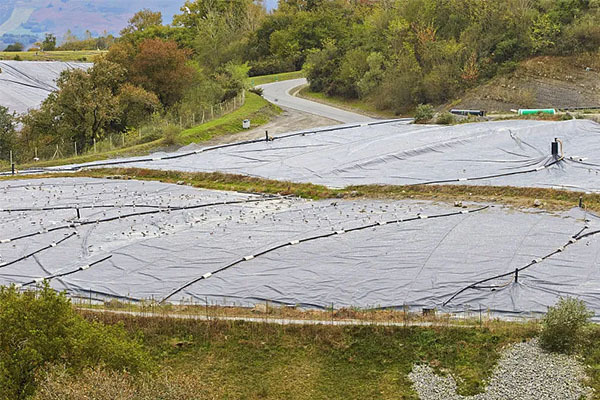Understanding HDPE Unidirectional Geogrid: A Key Component in Modern Construction
Release time:
2025-06-07
In the realm of construction materials, HDPE (High-Density Polyethylene) unidirectional geogrid plays a pivotal role in reinforcing soil and supporting various structures. This innovative material is composed of high-density polyethylene, which grants it both strength and flexibility, making it an excellent choice for a variety of civil engineering applications. One of the primary advantages of HD
In the realm of construction materials, HDPE (High-Density Polyethylene) unidirectional geogrid plays a pivotal role in reinforcing soil and supporting various structures. This innovative material is composed of high-density polyethylene, which grants it both strength and flexibility, making it an excellent choice for a variety of civil engineering applications.
One of the primary advantages of HDPE unidirectional geogrid is its ability to enhance the load-bearing capacity of soil. When utilized in conjunction with gravel or other aggregates, the geogrid helps to distribute loads more evenly across a broader area. This characteristic is especially beneficial in road construction and the stabilization of slopes, as it reduces the risk of soil erosion and collapse. By providing improved structural integrity, HDPE unidirectional geogrid enables engineers to design more sustainable and cost-effective solutions.
Furthermore, the unique unidirectional design of this geogrid allows it to handle tensile forces efficiently. Manufacturers engineer the grid to have high tensile strength in one direction, which is particularly advantageous in applications such as retaining walls and embankments. This orientation helps to resist lateral soil pressures, thereby minimizing the potential for failure under extreme conditions.
Another key benefit of HDPE unidirectional geogrid is its resistance to environmental factors. Being made from high-density polyethylene, the material exhibits excellent durability against moisture, chemicals, and UV radiation. This resilience ensures that the geogrid maintains its integrity over time, extending the lifespan of the structures it supports. As a result, it is commonly used in various outdoor applications, including parking lots, roadways, and even green roofs.
Moreover, the installation process of HDPE unidirectional geogrid is relatively straightforward, which can lead to significant time and labor savings during construction. Its lightweight nature allows for easy handling and placement, making it an efficient choice for contractors looking to streamline their projects. The reduction in installation time can translate to lower overall project costs while maintaining high standards of safety and quality.
In summary, HDPE unidirectional geogrid stands out as a crucial component in the construction industry, offering enhanced load distribution, tensile strength, and environmental resistance. As professionals in the field continue to seek innovative solutions for soil stabilization and structural support, the adoption of this material could pave the way for more durable and sustainable building practices. By understanding the benefits and applications of HDPE unidirectional geogrid, industry stakeholders can make informed decisions that contribute to the success of their projects.
One of the primary advantages of HDPE unidirectional geogrid is its ability to enhance the load-bearing capacity of soil. When utilized in conjunction with gravel or other aggregates, the geogrid helps to distribute loads more evenly across a broader area. This characteristic is especially beneficial in road construction and the stabilization of slopes, as it reduces the risk of soil erosion and collapse. By providing improved structural integrity, HDPE unidirectional geogrid enables engineers to design more sustainable and cost-effective solutions.
Furthermore, the unique unidirectional design of this geogrid allows it to handle tensile forces efficiently. Manufacturers engineer the grid to have high tensile strength in one direction, which is particularly advantageous in applications such as retaining walls and embankments. This orientation helps to resist lateral soil pressures, thereby minimizing the potential for failure under extreme conditions.
Another key benefit of HDPE unidirectional geogrid is its resistance to environmental factors. Being made from high-density polyethylene, the material exhibits excellent durability against moisture, chemicals, and UV radiation. This resilience ensures that the geogrid maintains its integrity over time, extending the lifespan of the structures it supports. As a result, it is commonly used in various outdoor applications, including parking lots, roadways, and even green roofs.
Moreover, the installation process of HDPE unidirectional geogrid is relatively straightforward, which can lead to significant time and labor savings during construction. Its lightweight nature allows for easy handling and placement, making it an efficient choice for contractors looking to streamline their projects. The reduction in installation time can translate to lower overall project costs while maintaining high standards of safety and quality.
In summary, HDPE unidirectional geogrid stands out as a crucial component in the construction industry, offering enhanced load distribution, tensile strength, and environmental resistance. As professionals in the field continue to seek innovative solutions for soil stabilization and structural support, the adoption of this material could pave the way for more durable and sustainable building practices. By understanding the benefits and applications of HDPE unidirectional geogrid, industry stakeholders can make informed decisions that contribute to the success of their projects.






